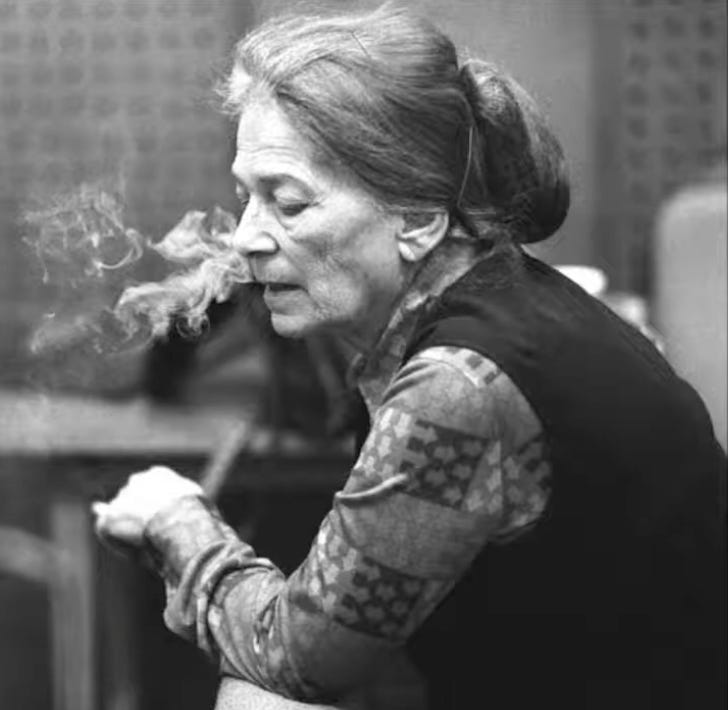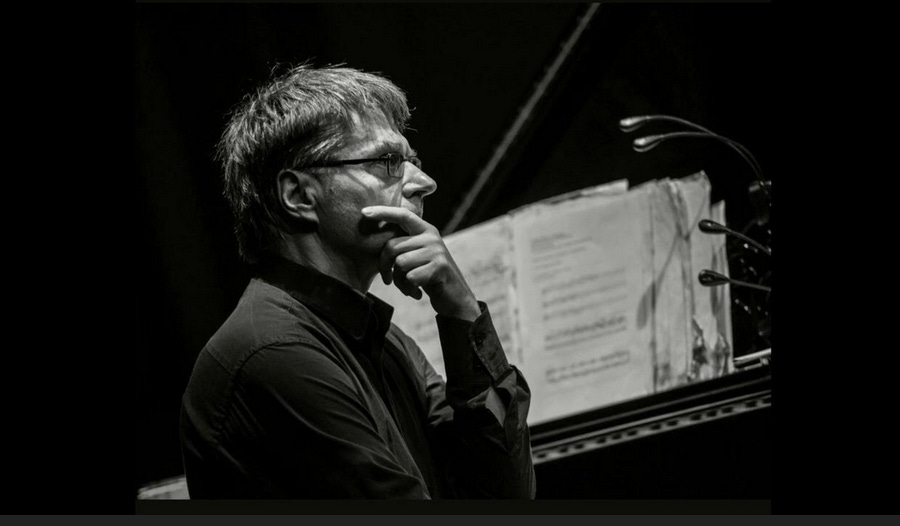Murky, Misty Memories of Hungarian Beethoven Pianists
Year Two, Week 24, in one pianist’s journey to perform the 32 sonatas of Beethoven
I stumbled across a soulful find on YouTube this week: the legendary Hungarian pianist Annie Fischer at age 73, playing in a 1987 live concert in London.
She’s playing Beethoven’s crotchety, swashbuckling Sonata Opus 31 No. 3 in G major. And she is, of course, smoking in the image, as she always was when not playing, hence her nickname “Ashtray Annie”. Here’s the link.
This concert took place two years after I went to Hungary to be in my teacher György Sebők’s masterclass. I was partly funded by my country via the Canada Council, and partly by a personal cash gift from Sebők to me. He wanted to bring some North American students with him. It was his first time going back to Hungary since he had fled during the revolt against the Soviet Union in 1956, when he was 34. He’d gone first to Paris, where he’d won the Grand Prix du Disque and had a successful performing career, and then at age 40 to the new and amazing School of Music in Bloomington, Indiana.
Fast forward another 23 years, and he was being officially invited back to Hungary by its government, still a Soviet satellite State behind the Iron Curtain. That was all about to be changed by the fall of the Berlin Wall and Communism a few years later.
We sat in an ornate hall of mirrors in the Festetics Palace, where two nine-foot pianos had been positioned. Liszt had played here.
Every once in a while, we heard a fighter plane streak by. Once, a delegation of government officials filed in and stood unsmiling at the back of the room. They wore heavy glasses and boxy suits, like a spy movie version of themselves. As they entered, Sebők’s face registered a slightly wicked grin, and he took a few extra puffs of his cigarette on its holder.
The day before the end of the course, the young celebrity pianist Zoltan Kocsis showed up, since his girlfriend was one of the students. He went into the gift shop and turned upside-down all of his albums being sold there, then partied with us that evening, speaking only Hungarian, his girlfriend on his lap, the very picture of Budapest radical intelligensia.
The next morning, we all went to the small train station in the grey early morning. I remember Kocsis and his girlfried leaving on the train before mine, opening their window and hanging out to wave goodbye to us. I was with an American cellist and the Sebők piano student Gabor Csalog, with whom we went to Budapest to stay in Gabor’s cold-water flat there. He put us up on mats under his piano, since there was room nowhere else among a jumble of stacks of books, two East German musicians staying on the couch, folklore instruments, and a miniscule kitchen into which we all crowded for coffee anyway.
There’s another precious find on YouTube: Gabor’s live version of Beethoven’s Sonata Opus 110.
I digress from Annie Fischer because her live performance evokes a world to me. György Sebők – I still have to pinch myself that he was my teacher – revered her playing. Eight years her junior, he knew her musicianship well from his music upbringing in Hungary. But we in North America didn’t know her playing, and I never could find her recordings at the time.
Now I listen to her live performance, and immediately I get his reverence for her. Fischer recorded all the Beethoven sonatas, and her set is acknowledged to be one of the best, but I didn’t get from her studio recordings why Sebők’s voice took on a misty and mystical tone when speaking of her. Sure, the recordings are clean, clear, crystalline. But it’s in the live playing that you hear the temperament. I rejoice to hear that she wasn’t at all a clean player in live performance – but she was a dazzling one. This was just like György Sebők himself. Like him, plainly she could put down her cigarette and play anything on a dare, swooping around turns like a daredevil hockey player on the power play.
The immediacy of the moment. Moments, flashes, acknowledged to be all you really did have.
Kocsis had this quality too. When young, waving from a train in a grey Hungarian morning. And then when older, eight years before his untimely death in 2016, this striking clip of him playing the orchestra part for a student rehearsing the second Rachmaninoff Concerto. Music and nothing but music, and falling pages be damned!!
So, what do these Hungarians, and their Ground Zero, the Liszt Academy in Budapest, have to tell us about Beethoven?
While it’s true that the great Hungarian piano tradition has a flavour and approach all its own, not necessarily dependent on German or Austrian scholarship, anyone who has come in close contact with it will tell you its DNA contains the ineffable temperament, spontaneity, genius for dramatic narrative, stubbornness, and virtuosic keyboard freedom of Beethoven and his music. After all, one of the two greatest loves of Beethoven’s life was the Hungarian pianist Josephine Brunsvik, and he became deeply enmeshed with her whole family. Today that connection is displayed at the Beethoven Museum in the former Brunsvik estate in Martonvásár, Hungary.
Meanwhile, back in the present, in my home here, it’s a dull day on my Island. It’s early 2025. I know that many of you, if you read Substack, are seeing all the gloomy analyses of our current world geopolitical situation.
What little I have to offer is this: in the disintegrating days of Communist Hungary of the 1980s, a soulful pianist culture was thriving, under the radar, with a tiny, wicked grin on its face and a cigarette at the side of its mouth.










Thank you, for that last paragraph especially. Lately it feels every beautiful act is an act of resistance.